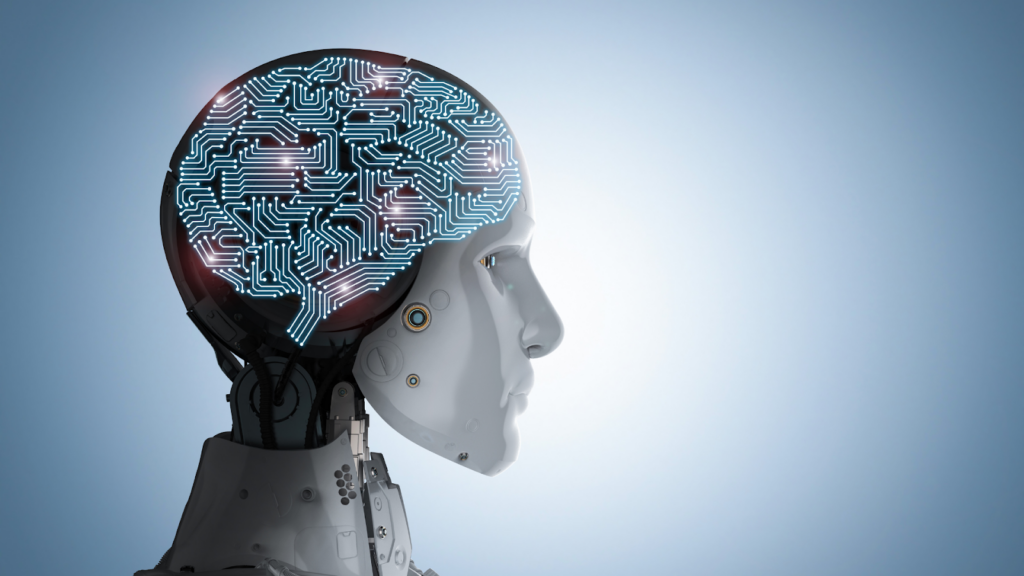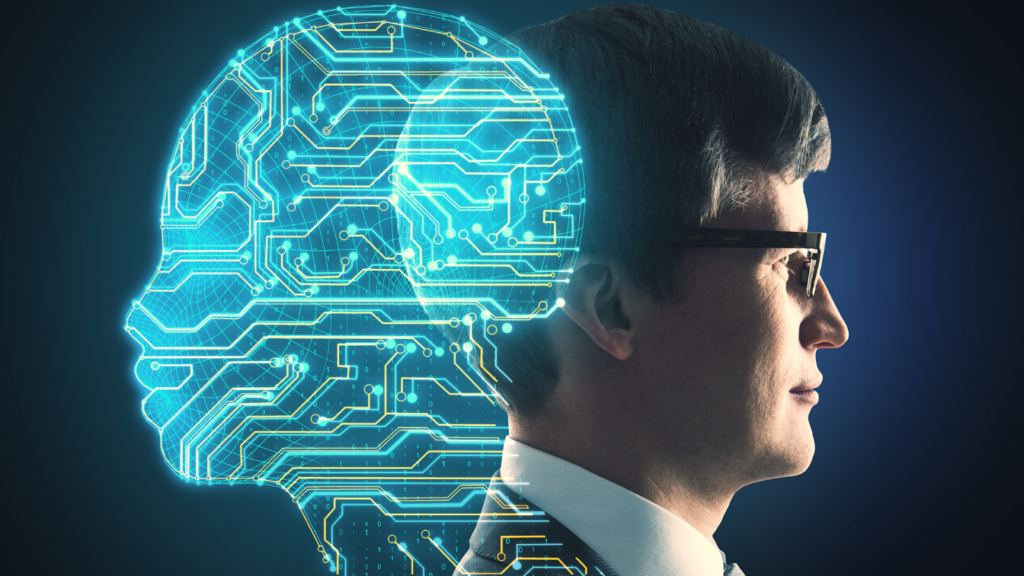With the surge in cyber threats, the integration of advanced technologies like Artificial Intelligence (AI) and Machine Learning (ML) has become indispensable in safeguarding our data and systems. Harnessing AI in cybersecurity allows organizations to identify, scrutinize, and promptly react to malicious activities.
This comprehensive guide serves as your gateway to understanding the world of AI cybersecurity. Discover its exceptional advantages, explore its wide range of applications, and gain insights into how cybercriminals cunningly exploit AI.
In this age of relentless cyber threats, stay a step ahead with WireX Systems, the leading provider of AI-powered cybersecurity solutions. Arm yourself with the tools and knowledge to outsmart cybercriminals, safeguarding your digital future.
What Is AI Cybersecurity?
AI Cybersecurity is a revolutionary approach that harnesses the power of artificial intelligence (AI) and machine learning (ML) to safeguard networks, data, and systems against the ever-increasing threat of cyber attacks.
By leveraging advanced algorithms and real-time data analysis, AI Cybersecurity actively detects, analyzes, and responds to malicious activities in order to mitigate potential damage. This cutting-edge technology enables organizations to proactively identify suspicious behavior, providing enhanced accuracy and automation.1
With cyber threats becoming more sophisticated, AI Cybersecurity empowers the organizations to maintain a competitive edge by offering real-time protection, reducing attack surfaces, and providing comprehensive visibility into networks and systems.
How Does It Work?
AI cybersecurity operates through the integration of advanced AI technologies to both detect and neutralize cyber threats in a timely manner. It harnesses the power of AI algorithms, such as machine learning, natural language processing, and deep learning to swiftly identify and counteract potential threats.
Benefits Of AI Cybersecurity
AI-based cybersecurity solutions offer a wide range of advantages to organizations. By leveraging AI-based systems, businesses can detect and respond to threats faster and more accurately, while also improving data correlation and automation capabilities. Here are some of the key benefits of AI-based cybersecurity:
Detect Threat Faster
By utilizing artificial intelligence, machine learning, and data analytics, AI cybersecurity greatly improves threat detection speed and accuracy compared to conventional methods.
It swiftly and accurately analyzes vast volumes of data, outpacing human capabilities to identify patterns and irregularities suggestive of potential malicious activity. This fusion of technologies not only increases the efficiency of threat detection but also fortifies the overall cybersecurity landscape.
Improved Accuracy
AI-powered cybersecurity systems outperform traditional methods by offering superior threat detection accuracy. These systems utilize machine learning algorithms to discern intricate patterns in data, often indiscernible to human eyes.
They excel in detecting nuanced and complex patterns that might easily elude human detection. This precision, facilitated by artificial intelligence, markedly enhances the effectiveness and reliability of cybersecurity measures.
Enhanced Data Correlation
The advent of AI technology has revolutionized data correlation, enhancing its efficiency and precision. AI-driven data correlation serves as a critical tool for detecting anomalies within data sets, potentially signaling a security breach.
Moreover, this technique can discern connections between disparate data types, often overlooked by human analysis. By providing a more holistic view of an organization’s data, AI-driven data correlation empowers businesses to make informed, strategic decisions, fortifying their security measures.
Self-Sufficiency
One of the primary advantages of AI cybersecurity is its self-sufficiency. AI-driven systems possess the ability to make independent decisions, negating the need for constant human oversight. This autonomy paves the way for quicker, more accurate responses to potential threats.
Enhanced Automation
AI-powered cybersecurity systems substantially alleviate the burden of manual labor, freeing up security personnel to tackle more intricate tasks. Utilizing automated tools, these solutions swiftly and accurately detect and counter threats, considerably curtailing the time required for threat investigation and resolution. This frees up the Analyst to investigate and not be bogged down with the mundane tasks.
Improved Detection Of Zero-Day Attacks
Zero-day attacks represent malevolent actions that take advantage of previously unidentified weaknesses within an organization’s security infrastructure. Compared to traditional security systems, AI-driven cybersecurity solutions excel in detecting these zero-day threats with superior speed and precision, thereby fortifying the organization’s defensive measures.
Take charge of your cybersecurity defense with WireX Systems. Stay ahead of malicious actors and safeguard your digital assets. Don’t wait for cyber threats to strike. Take the first step towards fortifying your organization’s security. Connect with the experts at WireX Systems to discuss your cybersecurity needs and discover tailored solutions that will protect your business from the ever-evolving threat landscape.
AI Cybersecurity Use Cases
AI cybersecurity can be used in a variety of different use cases. Some of the most common use cases include:

Network Threat Analysis
Network threat analysis is the process of identifying and assessing threats to a network and its associated systems. AI plays a major role in this process by providing an automated way to identify and analyze potential threats.
Malware Detection
AI-powered solutions, using machine learning algorithms, adeptly identify malicious code and activities. Designed for real-time detection, they can pinpoint malevolent code before it inflicts any system damage. Moreover, their capability to detect previously unidentified malware types underscores their effectiveness and adaptability in enhancing cybersecurity.
Security Analyst Augmentation
In addition to automating certain operations and identifying correlations between multiple data points, AI-powered systems have the capacity to recognize complicated data patterns that are frequently invisible to human analysts. This leaves security analysts with the bandwidth to concentrate on intricate tasks like threat analysis and response, without compromising on accuracy.
AI-Based Threat Mitigation
AI-based threat mitigation is a powerful tool that can help organizations protect their networks from cyber threats. It uses artificial intelligence (AI) to analyze network traffic to identify malicious behavior, and then take action to prevent it. AI-based threat mitigation solutions use a variety of techniques to identify malicious activity, such as machine learning, deep learning, natural language processing, and anomaly detection.
How Do Cybercriminals Use AI?
In the realm of cybercrime, an insidious transformation is underway as malicious actors harness the remarkable capabilities of artificial intelligence (AI) to orchestrate their nefarious schemes. With AI-based tools at their disposal, these cybercriminals are unlocking new levels of sophistication and stealth, posing a formidable challenge to organizations’ cybersecurity defenses.
- Identifying Vulnerabilities: Through the cunning utilization of AI, cybercriminals embark on expeditions to exploit system weaknesses with unparalleled efficiency. Employing AI-based tools, they deftly scan target systems, unveiling potential vulnerabilities like a skilled detective unraveling a web of secrets. From flaws in authentication and encryption protocols to manipulable code foundations, these vulnerabilities become the gateways for breaching fortified systems.
- Launching Sophisticated Attacks: The power of AI empowers cybercriminals to automate their assault strategies, transforming the battlefield of cyber warfare. Armed with AI-based tools, they orchestrate attacks with unrivaled precision and speed. These tools facilitate the generation of malevolent code, morphing into malicious agents that stealthily infiltrate their targets, leaving chaos and compromise in their wake.
- Evasive Maneuvers: Like shadows in the night, cybercriminals exploit the AI’s evasive prowess to remain undetected amidst vigilant security forces. By employing AI-based tools, they automate their evasive maneuvers, dancing through the intricate algorithms that safeguard digital fortresses. With deft finesse, they cloak their activities, eluding detection and confounding security teams. AI-generated code further amplifies their stealth, camouflaging their malevolence beneath layers of complexity.

AI Vs Data Analytics
AI and Data Analytics are both integral components of cybersecurity, each bringing unique strengths to the field. AI operates through comprehensive data analysis, forming assumptions, and making predictions that go beyond human capacities, providing an edge in real-time threat detection and response. This superiority, however, comes at a higher cost due to its demand for extensive resources and infrastructure.
On the other hand, Data Analytics, which is more cost-effective, excels in identifying patterns and trends within historical data. This allows for the anticipation of future events and the early detection of potential threats.
The application of AI and Data Analytics in cybersecurity presents a blend of immediacy and predictive foresight, respectively, offering robust solutions for today’s evolving cyber threat landscape.
Future Of AI In Cybersecurity
As we look ahead, it’s clear that the landscape of cybersecurity is being dramatically reshaped by the emergence of advanced AI-driven solutions. Here’s how:
- Real-time Threat Detection: AI systems are revolutionizing the way we detect and respond to cyber threats in real time. They’re not just identifying malicious activity, but also uncovering zero-day and insider threats that might otherwise go unnoticed.
- Automating Security Processes: AI is leading the charge in automating security tasks, drastically reducing the manual effort traditionally associated with securing systems. This isn’t just about saving time – it’s about enhancing accuracy too.
- Spotting Suspicious Behavior: With AI, we can detect suspicious behavior faster and more accurately than ever before. This means security teams can respond to potential threats with greater speed and precision, boosting their overall efficiency and effectiveness.
- Enhanced Resilience: As AI continues to play a more sophisticated role in cybersecurity, we’re looking at a future where our systems are more resilient against an ever-widening range of cyber threats.
Stay One Step Ahead Of Cyber Threats: Harness The Power Of WireX For Cybersecurity
WireX Systems is a company that specializes in network security, enabling organizations to preemptively tackle cyber threats. Leveraging state-of-the-art machine learning algorithms and other innovative technologies, WireX provides real-time detection, analysis, and response to cyber threats.
The platform’s AI-driven algorithms excel in identifying data anomalies, such as atypical user behaviors or suspicious network activities, coupled with its prowess in big data analytics for potential threat identification.
Beyond this, WireX offers an exhaustive toolkit for organizations to supervise and administer their security status effectively. Consequently, WireX empowers organizations to maintain a forward-leaning stance in cybersecurity, ensuring their systems remain safeguarded from cyber threats.
Final Thoughts
As we navigate an era where cybercriminals exploit AI to amplify their attacks, it’s crucial to meet this challenge head-on by harnessing AI’s capabilities in our cybersecurity measures. WireX Systems emerges as a leader in this sphere, with its innovative technology and swift, precise response mechanisms. It’s through these measures that WireX ensures organizations stay one step ahead of potential cyber threats, fortifying their cybersecurity stance.
Don’t settle for outdated security measures that leave you vulnerable to ever-evolving cybercriminal tactics. Join forces with WireX Systems and experience the future of cybersecurity today. Take action now, and let us empower you with the tools and expertise to safeguard your digital assets. Schedule a demo with WireX Systems and pave the way to a secure tomorrow.
Interested in learning more? Explore our captivating blog posts:
- What Is Threat Detection And Response (TDR)?
- What Is A Domain Generation Algorithm (DGA) And How Hackers Use It To Steal Information – WireX Systems
- AI Cyber Security: How Can Artificial Intelligence Detect Threats Faster?
FAQs
How can artificial intelligence and big data help to manage cyber risk?
Artificial intelligence and big data can help to manage cyber risk by providing an automated and comprehensive way to identify, analyze, and respond to threats. AI-driven solutions can detect anomalies in data, detect malicious activities, and provide real-time alerts and notifications. Big data can be used to analyze large amounts of data to detect patterns and correlations that can help to identify potential threats.
Should artificial intelligence be used in the field of cyber security?
Yes, artificial intelligence can be used to improve the security of systems and networks by providing automated and intelligent solutions to detect and respond to threats. AI-driven solutions can detect and respond to threats faster and more accurately than traditional methods, and they can also be used to automate processes and reduce the workload of security personnel.
How does AI help in security and surveillance?
AI can be used to improve security and surveillance by providing automated and intelligent solutions to detect and respond to threats. AI-driven solutions can detect and respond to threats faster and more accurately than traditional methods, and they can also be used to automate processes and reduce the workload of security personnel.
AI can also be used to analyze large amounts of data to detect patterns and correlations that can help to identify potential threats.
What is the role of artificial intelligence in internal security?
Artificial intelligence can be used to improve internal security by providing automated and intelligent solutions to detect and respond to threats. AI-driven solutions can detect and respond to threats faster and more accurately than traditional methods, and they can also be used to automate processes and reduce the workload of security personnel.
AI can also be used to analyze large amounts of data to detect patterns and correlations that can help to identify potential threats.
What are the downsides of AI in Cyber security?
The main downside of AI in cyber security is the potential for misuse. AI-driven solutions can be used to automate malicious activities, such as phishing attacks and data breaches. Additionally, AI-driven solutions can be used to bypass existing security measures, which can lead to increased risk. It is therefore important to ensure that AI-driven solutions are used responsibly and securely.






